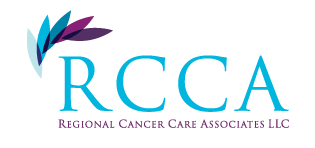- Advertise
- About OncLive
- Editorial Board
- MJH Life Sciences brands
- Contact Us
- Privacy
- Terms & Conditions
- Do Not Sell My Information
2 Clarke Drive
Suite 100
Cranbury, NJ 08512
© 2025 MJH Life Sciences™ and OncLive - Clinical Oncology News, Cancer Expert Insights. All rights reserved.
The Affordable Care Act Is Here!… Or Is It?
A majority of Americans-patients, physicians, hospital executives, business leaders, and elected officials- are bearing witness to the beginning of a change in healthcare reimbursement and delivery that rivals the introduction of the Medicare system in 1965.
Andrew L. Pecora, MD
Editor-in-Chief of Oncology & Biotech News
Chief Innovations Officer, Professor, and Vice President of Cancer Services John Theurer Cancer Center at Hackensack University Medical Center
President, Regional Cancer Care Associates, LLC
A majority of Americans—patients, physicians, hospital executives, business leaders, and elected officials— are bearing witness to the beginning of a change in healthcare reimbursement and delivery that rivals the introduction of the Medicare system in 1965.
Congress created Medicare under Title XVIII of the Social Security Act for people aged 65 and older, disabled young people, and those with endstage renal disease and Lou Gehrig’s disease. Prior to Medicare, almost half of older Americans had no form of health insurance because the expense of insurance was far more expensive than it was for young people without serious illness. Another social benefit of Medicare was that it facilitated desegregation of waiting rooms, a requirement for reimbursement at the time.
Medicare is financed in part by revenue generated by a 2.9% payroll tax that in 2013 is about to increase to 3.8% for income in excess of $250,000 for couples. Part A of Medicare is funded by the payroll tax and provides for hospital reimbursement, whereas Part B is medical insurance to pay for doctors, nurses, and diagnostic procedures performed in the outpatient setting. Part D was recently added to cover the expense of drugs. Parts B and D are covered by the premium paid for by the recipient.
Over the past decade the expense of medical care has increased dramatically, and so too has the number of young people not covered by insurance. The Affordable Care Act (ACA) was passed into law and signed by President Obama on March 23, 2010, to facilitate affordable coverage for the uninsured (~40 to 50 million people), and to address, for now indirectly, the growing cost of healthcare for all. Central to the ACA is a guarantee of coverage regardless of preconditions, minimum standards for health insurance policies, a mandate that all individuals buy insurance or pay a fine, and the establishment of health insurance exchanges. Other factors include changing reimbursement from fee-for-service to some form of a risk bundled payment.
Before any consideration is given to how we actually place providers of healthcare at financial risk without putting patients at clinical risk, we first need to consider the practical issues of implementation of such a large system that will affect all Americans. The early returns are not good. The exchanges have been slow in creation, key aspects of the ACA have been delayed due to logistics, and most recently, there have been substantive glitches in the software developed to sign up to the exchanges. Now add to this the fact that about half of our elected officials are doing everything they can to defund the ACA, even at the risk of hurting the US economy through a government shutdown.
Change of this scale is never easy, particularly if there is not true consensus. Imagine a patient considering a complex surgery that has a real risk of not working, and now add to it that the equipment required is malfunctioning and half the surgical team is trying to prevent completion of the surgery while it is ongoing. I for one would not sign up for this scenario. The problem of unintended consequences surfaces in any new endeavor. Medicare has clearly helped promote the health of older Americans, and although far from perfect, has worked out most of the glitches. For the ACA to have the same impact, it will need time and iterative adjustment. We all want proper care for everyone, but not at the expense of proper care for everyone.
Related Content:





